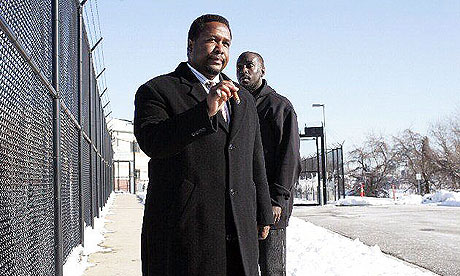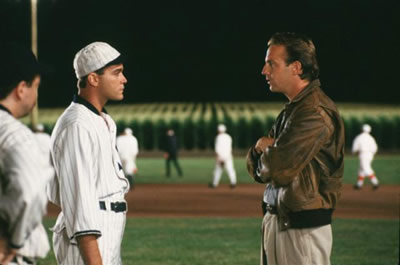As we roared
through a quarter of the Major League Baseball season, did anyone stop and take a
look at the attendance numbers? Calling them interesting would be an
understatement. Major League Baseball attendance as a whole is up 6% from this
point last season, which was probably helped greatly by a record breaking first
weekend of interleague play.
Conventional wisdom says that if a
team is winning, they are drawing fans. If you have read any book about Bill
Veeck, then you would know that the preceding statement is bunk (not Bunk
Moreland from The Wire). Conventional wisdom also says that if you build it,
they will come. Ok well maybe that was just Field
of Dreams, but whoever did say it never really did specify how many were
coming. Exactly 30 Major League ball clubs built it, but the majority of teams
don’t have enough people coming to fill their stadiums. Let’s take a deeper
look into this attendance conundrum.
The bad are good
First, look at the standings. Then,
look at the attendance figures. Now, back at the standings. And, back again to
the attendance figures. If your head isn’t spinning from looking back and
forth, then chances are that your head is spinning from the sheer disconnect
between the two. Check out the bottom six in attendance:
Attendance Rank
|
Team
|
Average Attendance
|
25
|
Baltimore Orioles
|
22.361
|
26
|
Chicago White Sox
|
20,281
|
27
|
Tampa Bay Rays
|
20,162
|
28
|
Seattle Mariners
|
19,916
|
29
|
Oakland Athletics
|
18,861
|
30
|
Cleveland Indians
|
15,838
|
Ok, now consult your
standings for these six teams:
Attendance Rank
|
Team
|
Division Standing
|
25
|
Baltimore Orioles
|
1 – AL East
|
26
|
Chicago White Sox
|
2 – AL Central
|
27
|
Tampa Bay Rays
|
2 – AL East
|
28
|
Seattle Mariners
|
3 – AL West
|
29
|
Oakland Athletics
|
2 – AL West
|
30
|
Cleveland Indians
|
1 – AL Central
|
Essentially, only two of these teams deserve to be in the
bottom six, in my opinion. The Mariners deserve to be in the bottom six because
they are not very good per se. I mean Kevin Millwood is in their starting
rotation, enough said. The Oakland Athletics deserve to be in the bottom six as
well. I do recognize that they are in second place in the AL West and playing
.500 ball, but they have already repeatedly expressed interest in moving to San
Jose which makes it tough to draw fans when you have disowned the ones that you
had (but that’s for another post).
We know that
the Rays simply have issues drawing fans so they are in the process of
attempting the Field of Dreams wisdom in building a new ballpark. I’ll only
give them a half pass though considering they have been playing
top-of-the-league caliber baseball for the past handful of seasons.
The lowly
Cubbies in the north side are top ten in attendance despite having the worst
record in the majors (as of 5/23), so why can’t the south side rival White Sox
draw any fans? They are second place in the AL Central. Maybe they are solely
looking at wins and losses? Maybe they miss Ozzie?
The biggest
issues with the bottom six are the two first place teams, the Indians and the
Orioles. I think the problem that I have with it personally is the fact that
these two teams are two once-proud organizations. These aren’t teams that
haven’t won in the history of their franchise like the Rays. Both teams have a
young core group of players, you know, like those prospects that the team tries
to sell you on for the future. Well the future is now for the Indians and the
Orioles, so if they want to continue this on-field success, then they better
start bringing some revenue through those turnstiles.
The good are bad
For the sake of the top 11, I will
just pick out the five that I want to highlight the most. Check it:
Attendance Rank
|
Team
|
Average Attendance
|
1
|
Philadelphia Phillies
|
44,981
|
5
|
New York Yankees
|
40,972
|
7
|
Boston Red Sox
|
37,564
|
8
|
Chicago Cubs
|
37,285
|
11
|
Los Angeles Angels
|
33,581
|
In a normal season you wouldn’t even do a double take at
this point; however, it is 2012, and these teams are not performing to what the
fans have come to expect. Check out the standings:
Attendance Rank
|
Team
|
Division Standing
|
1
|
Philadelphia Phillies
|
5 (last) – NL East
|
5
|
New York Yankees
|
4 – AL East
|
7
|
Boston Red Sox
|
5 (last) – AL East
|
8
|
Chicago Cubs
|
6 (last) – NL Central
|
11
|
Los Angeles Angels
|
4 (last) – AL West
|
Of course I am
not condoning fans to become fair weather fans and only attend games when the
team is performing well. Conversely, I’m not telling fans to not attend games
when the team is performing poorly. All I’m asking for is some kind of
explanation, and I’m going to attempt to work out some rational thought here.
Why does this
happen?
Let’s start
with the teams who are performing well at the turnstiles and poorly on the
field because I think they are a little easier to understand. The Phillies,
Yankees, and Red Sox have been the elite teams in Major League Baseball over
the past half dozen or so seasons. The continued success inherently gives off a
scent of hope and strong brand association which could be a simple explanation
to why they are pulling in such large attendance numbers. It isn’t even as if
all three of these teams came in with high expectations and are simply in a
beginning stretch of vast underachievement. The Phillies, who are drawing the
most fans in baseball, came into the season with the most pessimism they have
seen since maybe 2007.
The Cubs are an
interesting case study in that they are a strong brand that doesn’t win ever.
In fact, their place in baseball as perpetual losers has actually been what has
built their brand so strong. I know, it is pretty crazy. Becoming a perpetual
loser has allowed the team to develop a brand of perpetual hope which, along
with one of the most historic ballparks in the game, has built a strong fan
base and attendance numbers.
We all know why
the Angels have able to draw so well at the box office. It starts with poo and
it ends with holes. Although it is tough to build a lasting attendance affect
through free agent signings, all rules of conventional wisdom go out the window
when you sign a surefire Hall of Fame slugger with 10 years (maybe) left in his
career.
The tough part
is to explain why the teams that are performing so poorly at the turnstiles and
well on the field. Typically teams that know they are bad try to sell tickets
by talking up the future (ie. prospects). We already know why the Mariners,
Rays and Athletics are drawing so poorly, but the other four have big time,
talented prospects that are now helping at a major league level. It kind of
makes your head spin in circles when you really think about it.
The Orioles have the second best record in all of baseball
and they have a big time manager. The team is as homegrown as a major league
ball club gets, yet they aren’t drawing the crowds. To make it even more
mind-boggling for the Orioles, this season is the 20 year anniversary of Camden
Yards, which they have been thoroughly promoting.
To Sum It Up
I’m beginning
to wonder if on-field performance for a single season really even means that
much. If the success isn’t going to be sustained and if the team is even in the
realm of being labeled a pretender, then the fans simply aren’t going to show
up. To draw the big crowds, you need to build a lasting brand. One that is
strong enough to endure a losing season or two. If teams understood this a bit
better, then I think a lot of teams would shy away from the “go for it all in
one season” mentality. That risk is a calculated one that only the top prestige
teams are afforded the luxury of taking because they know the fans will be back
next year.
So some advice for the teams that have prospects thriving in
the majors: make it last and make it count. Do not go selling them off to the
bigger teams the second things look to be going downhill. Build a product on
the field that will last. “If you build (a lasting on the field product), they
will come.” This mentality will allow you a season in the cellar every once in
a while.
Do you think that the fans in Cleveland and Baltimore will
start to come out if the team keeps winning this season?
-- Attendance figures and standings
through 5/23 were compiled with information from bizofbaseball.com, espn.com,
and fangraphs.com.
 Welcome to the Route 30 Detour! US Route 30 intersects at I-95 in Philadelphia and goes from coast to coast, including passing through Pittsburgh and the home of Drexel University SMT student and blog contributor, Bryan Fyalkowski (@fyalkowski)...
Welcome to the Route 30 Detour! US Route 30 intersects at I-95 in Philadelphia and goes from coast to coast, including passing through Pittsburgh and the home of Drexel University SMT student and blog contributor, Bryan Fyalkowski (@fyalkowski)...




















